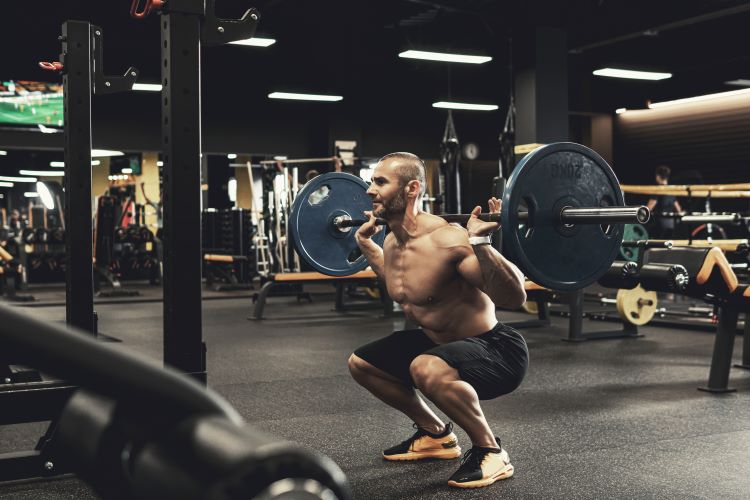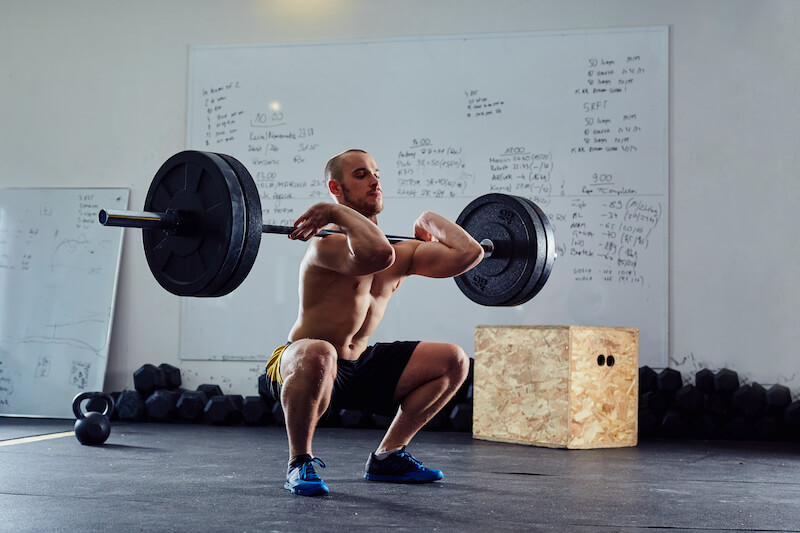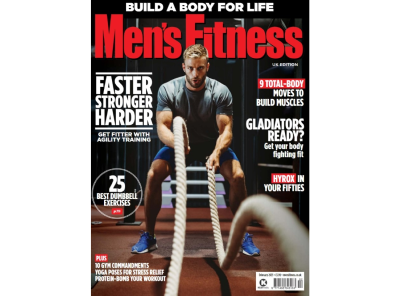Learn how to improve your squat with these technical upgrades and training secrets from Mitch Raynsford, a strength and conditioning coach and personal trainer at P3RFORM…
The squat is the king of strength exercises, delivering a powerful stimulus your glutes, quads, hamstrings and entire core. But it can also leave you quickly hitting a frustrating plateau. There are many factors which might be limiting your squat performance, from poor form to muscle asymmetries and even confidence – here’s how to improve on all of them.
RELATED CONTENT:
8 ways to improve your squat
1. Perfect your squatting form
One of the most common limiting factors when squatting is poor form. Even if you’ve been squatting for years, you can still make subtle changes to significantly improve your squat. Squatting in front of a mirror, or asking a mate to film you, can help you to identify common mistakes.
“Back squats are an exercise where you quickly see form slipping if you add too many plates, or when your concentration starts to drop,” warns strength coach Mitch Raynsford of P3RFORM.
“An early hip lift is a common issue. If your hips rise faster than your torso, it forces you to recruit your lower back and puts extra strain over the legs. Valgus knee movement – when you knees collapse inwards as you lift – is another issue, as it puts huge stress through the medial (inner) border of the knees and ligaments.”
Related: Try this dumbbell-only leg workout
But you can correct these limiting issues by bracing your core.
“Breathe deeply into your gut and keep abs braced throughout the movement,” says Raynsford. “Lower for a three-second count, allowing your knees to rack over your toes, while not caving into the middle, and keep your chest high. Then holding that firm, controlled stance, drive your feet into the floor, and rise with your hips and your chest at the same time.”
Related: What is a hack squat?
2. Switch to front squats
To further improve your form, try switching one of your back squat sessions to front squats. “A front squat forces you to lift with a more upright form, focusing on lower limb recruitment and reducing lower back involvement,” explains Raynsford.
“If any forward lean does come into play, and your hips rise too early, the front rack posture would put pressure on the wrists and cause you to drop the bar. Put simply, it’s not easy to cheat a front squat, so it encourages you to follow a good technique. Focus on good form, and ensure you are moving well throughout, so your final set looks the same as your warm-up sets.”
3. Supplement your squats with other exercises
If you want to improve your squat, you need to do other exercises to enhance your key supporting muscles.
“Hip thrusts are perfect for developing overall glute strength and size, whilst stabilising the pelvic girdle and knees,” explains Raynsford. “Glutes are a key area which many men neglect in the gym, but they are the real powerhouses of a strong squat.”
Related: Barbell hip thrust benefits
Unilateral exercises are also helpful for ironing out imbalances and asymmetries which can limit your squat performance. “Bulgarian split squats are an ideal exercise to load the quads and glutes one leg at a time, as they will highlight any imbalances,” says Raynsford.
4. Mix up your loads
There are endless squat rep variations to try, but your main focus should be on progression.
“Start with 3 sets of 10, increase to 11 the next week, and so on up to 15,” suggests Raynsford. “Then increase the weight, drop back to 10 reps and repeat the same rep progressions. When comfortable with your form, increase the load again and move to 4 sets of 6-8 reps, and finally to 5 sets of 3-5 reps. This plan will allow you to build muscle through the hypertrophy phases and solidify your form before looking to really develop.”
5. Brace your core to improve your squat
“Bracing throughout the squat is key for the health of your back and for ensuring the movement stays fluid and safe,” explains Raynsford. “So understanding how to brace your core in controlled and isolated movements will supercharge your squat potential.”
A good option for squatters is deadbugs: lie face-up on the floor with your arms straight out above you and your knees at 90 degrees directly over your hips. Drive your lower back into the floor by thinking about lifting your shoulders up slightly, to ensure there is no gap between the floor and your lower back. Hold this position for 3 sets of 15-45 seconds while focusing on your breathing.
Now extend the opposite arm and leg away from you until they are just above the floor, before returning to the start position. Repeat the action on the other side. Aim for 3 sets of 6-10 reps each side.
6. Team up with a spotter
Your mind can function as an unhelpful handbrake, particularly if you’re lifting heavy metal alone, so team up with a spotter for extra confidence. “With a spotter, you will always be able to safely return the bar to the rack,” says Raynsford. “So when you get to the point of failure in your final set, it can give you the confidence to squeeze out a few more reps.”
7. Add some chains or bands to improve your squats
Injecting some instability into your squat will encourage your stabilising muscles to function more effectively.
“Wrapping chains or bands around the barbell can help you to break through those tough sticking points,” says Raynsford. “Extra resistance is added, making it difficult through the full range of motion. Supra-maximal training is ideal here, so aim for 4-5 sets of 3-5 reps of 55-60% of your 1RM, with equal loads of chains or bands on each side.”
Related: How To Use Resistance Bands
8. Do more jump squats
Adding some barbell loaded jump squats into your weekly regime will power up your squat PB. “Including jump squats at 30% 1RM means you will get a speed-strength exercise which develops rapid force production,” explains Raynsford. “This has been shown to aid improvements in maximal isometric squat strength and sprint speed.”
As the barbell loaded jump squat is a power-focused exercise, low rep ranges are best here, so aim for 3 sets of 3-5 reps with at least 3 mins rest between sets for optimal recovery.
Related: 5 of the best plyometric exercises









